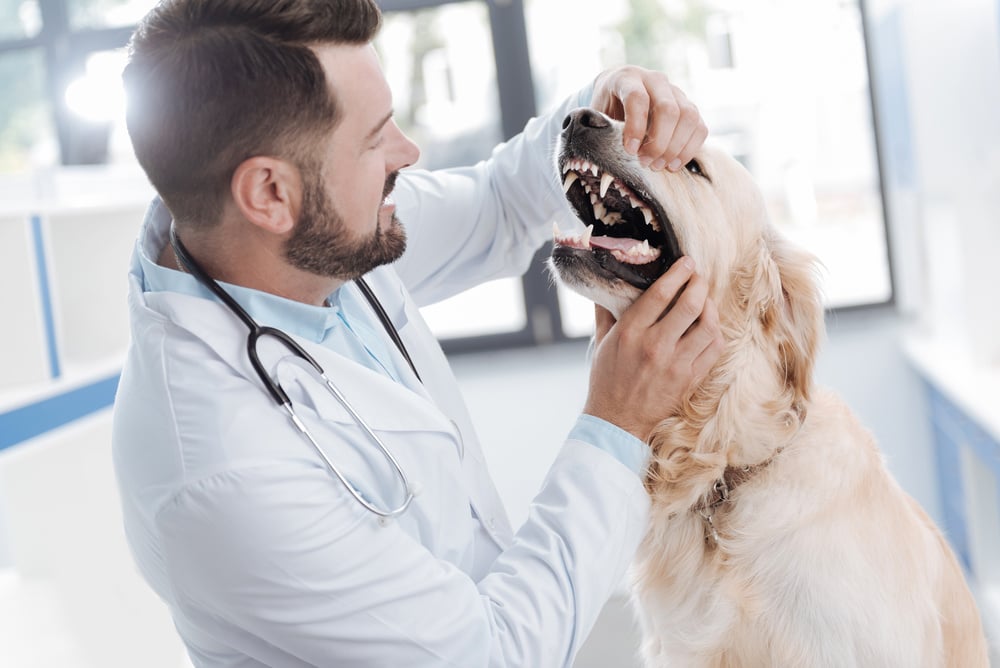
Periodontal Health in Companion Animals
Periodontal health is crucial in maintaining a good quality of life for your patients and avoiding further health complications.
Periodontal disease is one of the most common conditions affecting dogs and cats, with studies estimating that over 80% of dogs and 70% of cats develop some degree of periodontal disease by the age of three (Harvey et al., 2015). This progressive condition not only causes oral pain and halitosis but is also linked to systemic diseases such as endocarditis, renal disease, and metabolic disorders (Rawlinson et al., 2019).
Stages of Periodontal Disease
Periodontal disease progresses through four distinct stages:
- Gingivitis: Characterized by redness, swelling, and bleeding gums caused by plaque accumulation. This stage is reversible with proper intervention.
- Early Periodontitis: Plaque hardens into tartar, leading to mild bone loss and inflammation. Halitosis becomes more noticeable.
- Moderate Periodontitis: Increased bone loss occurs, along with gum recession and potential tooth mobility.
- Advanced Periodontitis: Severe bone destruction results in tooth loss, abscess formation, and potential systemic spread of infection
Contributing factors
- Dietary Habits: Consumption of soft foods that adhere to teeth surfaces can promote plaque formation.
- Breed Predisposition: Small and brachycephalic breeds often exhibit dental overcrowding, increasing the risk of periodontal disease.
- Systemic Conditions: Diseases such as diabetes mellitus and renal insufficiency can exacerbate oral malodor.
Impact of Periodontal Disease
Periodontal disease progresses through stages: gingivitis, early periodontitis, moderate periodontitis, and advanced periodontitis. If left untreated, it can lead to tooth loss and has been linked to systemic conditions, including endocarditis and renal disease. Early intervention is paramount to prevent irreversible damage.
Diagnostic Approach
A comprehensive oral examination should include:
- Visual Inspection: Assess for signs of gingival inflammation, recession, and plaque accumulation.
- Olfactory Assessment: Evaluate the character and intensity of oral odors.
- Diagnostic Imaging: Dental radiographs are essential to evaluate the extent of periodontal involvement and to detect subgingival pathology.
Management Strategies
Effective management encompasses both professional treatment and at-home care:
- Professional Dental Cleaning: Scaling and polishing to remove plaque and tartar, coupled with periodontal therapy as needed.
- Antimicrobial Therapy: Utilization of oral gels containing antimicrobial agents to control bacterial proliferation.
- Home Care Regimen: Regular tooth brushing with veterinary-approved toothpaste and the application of oral hygiene gels.
The Role of Antimicrobial Agents in Periodontal Care
Chlorhexidine has been extensively studied for its antibacterial effects in veterinary dentistry. It is effective against Porphyromonas spp., the primary bacteria involved in periodontal disease. Studies have demonstrated that chlorhexidine-based oral care products significantly reduce plaque and gingival inflammation in dogs (Clarke et al., 2011).
Product selection
Addressing halitosis and periodontal disease in companion animals requires a multifaceted approach, combining professional veterinary care with effective at-home oral hygiene practices. Here are the products to have on hand:
Stomodine F is an oral gel formulated to help control bacterial microflora in the oral cavity, thereby contributing to improved oral hygiene and reduction of halitosis. Its key components include:
- Chlorhexidine: A broad-spectrum antimicrobial agent effective against oral pathogens.
- Tris-EDTA: Enhances the permeability of bacterial cell walls, potentiating the effects of chlorhexidine.
- Phytosphingosine: A pro-ceramide compound that aids in maintaining the integrity of the gingival barrier.
